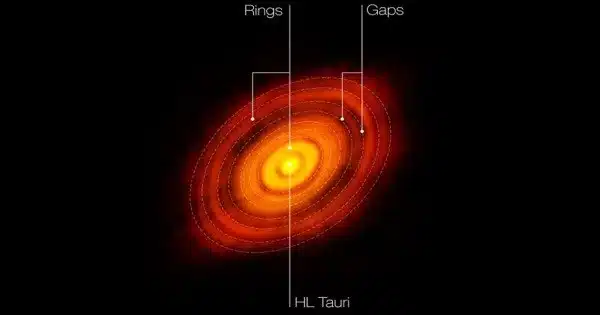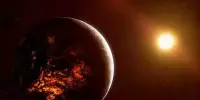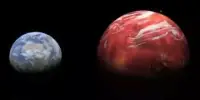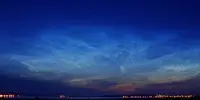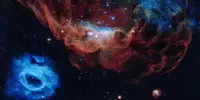Planetary formation is a complicated process that takes place within protoplanetary disks, which are rotating disks of gas and dust that encircle newborn stars. The nebular hypothesis, which argues that planets develop from the material in these disks, is widely accepted. Small dust particles collide and cling together over time, generating larger and larger objects. Astronomers have discovered fresh evidence for how giant planets like Jupiter can develop.
Joel Kastner, a professor in the Chester F. Carlson Center for Imaging Science and the School of Physics and Astronomy at Rochester Institute of Technology, and a team of European Southern Observatory (ESO) researchers have discovered new evidence of how planets as massive as Jupiter can form, using images from the ESO’s Very Large Telescope (VLT) and the Atacama Large Millimeter/submillimeter Array (ALMA).
The combination of VLT and ALMA imaging has shown the presence of dusty clumps near the young star V960 Mon, which could collapse to form gigantic planets. The research is based on an infrared image taken with the Spectro-Polarimetric High-contrast Exoplanet Research (SPHERE) instrument on ESO’s VLT and a radio-wavelength image obtained with ALMA, which reveals the material surrounding the star in intriguing detail.
The two of us put SPHERE observing proposals together to look at these outbursting objects. We were hoping to see a structure around them that is lit up by the outbursts, but we really weren’t sure what kind of structure we might see. We thought we might be able to see the dusty material around the star that is feeding the star and maybe forming planets, and this was a great case where both appear to have been detected.
Joel Kastner
In 2014, this young star drew the attention of astronomers when it abruptly raised its brightness by more than 20 times. SPHERE images conducted shortly after the commencement of this brightness “outburst” revealed that the material orbiting V960 Mon is building into a series of intricate spiral arms stretching across distances greater than the whole solar system.
Kastner collaborated on the SPHERE imaging project alongside former RIT student David Principe ’14 Ph.D. (astrophysical sciences and technology), who currently works at the Massachusetts Institute of Technology’s Kavli Institute for Astrophysics and Space Research.
The first step of planetary formation involves the agglomeration of small dust and ice particles into larger objects known as planetesimals. These planetesimals range in size from a few meters to hundreds of kilometers. Planetesimals can crash and merge to generate even larger entities known as protoplanets. These protoplanets are the building blocks of planets and continue to expand through accretion.
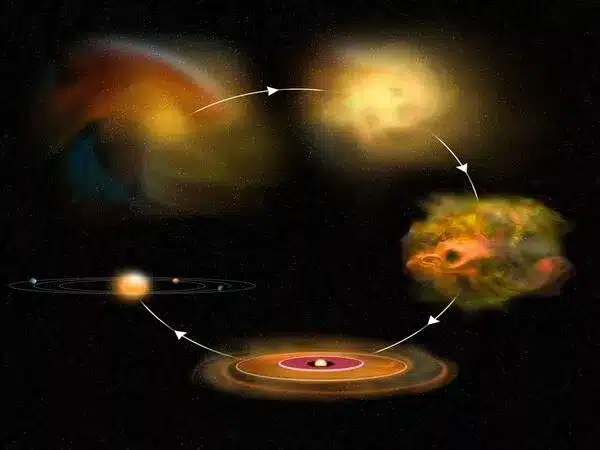
“The two of us put SPHERE observing proposals together to look at these outbursting objects,” said Kastner. “We were hoping to see structure around them that is lit up by the outbursts, but we really weren’t sure what kind of structure we might see. We thought we might be able to see the dusty material around the star that is feeding the star and maybe forming planets, and this was a great case where both appear to have been detected.”
Astronomers believe that big planets develop either through “core accretion,” in which dust grains slowly congeal to form a massive core that sweeps up gas, or by “gravitational instability,” in which enormous chunks of material surrounding a star compress and collapse. While evidence for the first of these scenarios has previously been discovered, evidence for the latter has been scarce. The VLT photos now show an actual detection of gravitational instability at planetary sizes.
“It’s a confirmation that one of the basic ideas of how planets form works,” Kastner added. “It’s a pretty good demonstration of what has been shown in very detailed simulations of discs around young stars to determine if they are making planets.”
